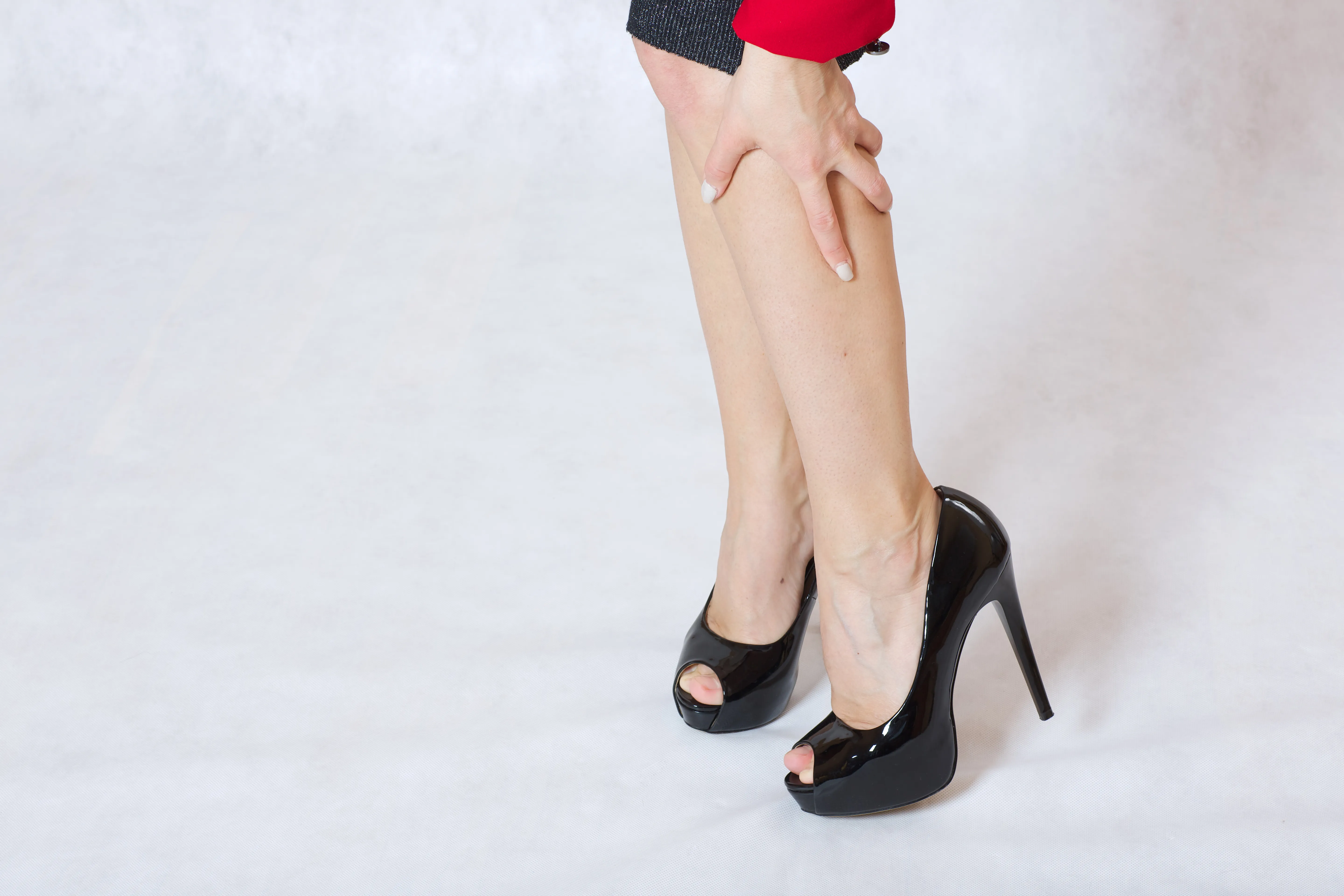Chronic venous insufficiency (CVI) is a frequently occurring but underdiagnosed cause of leg pain and swelling, causing people to learn to live with all kinds of pains and cramps, heaviness and even a burning sensation in their legs as they go about their days. It is frequently associated with varicose veins. It is so common that by age 50, 40%1 of women and 1 in 5 men have significant leg vein problems.
Here’s what’s actually happening in your body if you suffer from Chronic venous insufficiency
CVI occurs when the veins in your leg don’t allow blood to flow back up to your heart - normally, the valves in your veins ensure that blood flows towards the heart. If and when these valves don’t work as intended, blood can also flow backwards, causing it to collect – or pool - in your legs.
In short, CVI is a condition in which veins have problems moving blood back to the heart. This condition is also known as chronic venous stasis2, post-thrombotic syndrome2, or phlebitis2. It usually affects veins in the legs, although in some cases it also occurs in the arms.
What are the causes of CVI?
Chronic venous insufficiency can develop from quite common conditions such as varicose veins – which is when blood vessels become noticeably twisted or enlarged. CVI can also occur as a result of a deep vein thrombosis or other clot that damages the valves that are inside our veins.
As we grow older, our veins become increasingly weak, and then they have more trouble sending blood back to the heart like they’re supposed to. Really small valves in the veins can start failing, and cause blood to pool in the lower limbs - causing pain, swelling and other circulation issues.
Who can get CVI?2
People who have varicose veins aren’t the only group that develops chronic venous insufficiency. In fact, some people can have varicose veins and never develop chronic venous insufficiency at all!
We are more likely to get chronic venous insufficiency based on the following risk factors:
- Having a family history of CVI
- Being female, tall or carrying extra weight (obesity)
- Having a history of deep vein thrombosis in the legs
- Being of middle age or older
- Being pregnant
- If our days involve standing or sitting for long periods of time
How is chronic venous insufficiency diagnosed?
Most healthcare providers will go through your medical history and give you an exam. You may also have an imaging test called a Duplex ultrasound. This looks at blood flow, the structure of veins in your legs, and also checks the speed and direction of blood flow in the vessel.
How is it treated?
Treatments for chronic venous insufficiency include:
- Lifestyle Changes that improve blood flow in your leg veins like keeping your legs elevated or raised, wearing compression stockings and regular exercise to improve blood flow.
- Medicines that increase blood flow through the vessels are often recommended.
- Endovenous laser ablation or radiofrequency ablation (RFA), which is a minimally invasive procedure that closes veins via the use of a catheter
- In some serious cases, sclerotherapy may be used. This involves a chemical being injected into the affected veins causing them to no longer carry blood. Blood then returns to the heart through other veins and the body absorbs the scarred veins.
- In severe cases, surgery may be done.
That’s a lot of technical and clinical information!
If you are just looking to alleviate the signs and symptoms of CVI, then look no further than Esenvia® – an over-the-counter medication that relieves signs and symptoms of CVI/ Varicose veins such as:
- pain
- swelling
- burning sensation
- heaviness of the legs
- spider veins
Esenvia® also helps reduce the symptoms of heavy leg syndrome3 – which include pain, leg heaviness, and the sensation of swelling, cramps and edema. Some patients report an improvement in their symptoms within the first week itself, with continued improvement over two months.
Esenvia’s® active ingredient is diosmin – which available in Canada since 2014 but has been used in Europe for over 20 years to help relieve the symptoms of CVI. Diosmin is an extract of a naturally occurring flavonoid (which are antioxidant compounds that include many plant pigments and are useful in promoting good health). Diosmin is known to do the following:
- Improve venous tone
- Have anti-inflammatory properties
- Stimulate lymphatic circulation
- Have antioxidant properties
- Have vascular protector properties
- Generally well-tolerated
Esenvia® is clinically proven, and is available over-the-counter as a convenient and easy to use oral tablet!
This product may not be right for you. Always read and follow the label.
Esenvia® is a registered trademark owned by Norwell Consumer Healthcare Inc.
References
- Chronic venous insufficiency
https://academic.oup.com/eurheartj/article-abstract/42/40/4157/6350776?login=false - Who can get CVI
https://www.pennmedicine.org/for-patients-and-visitors/patient-information/conditions-treated-a-to-z/venous-insufficiency - Batchvarov IV et al. One-year Diosmin therapy (600 mg) in patients with chronic venous insufficiency: results and analysis. J Biomed Clin Res 2010;3(1):51-4.
- Pokrowsky AV. Results of a multicentre clinical trial on the effectiveness and safety of VASOKET in patients with varicose veins and chronic venous insufficiency.Angiology Vasc Surgery 2011; 17(4):8-13.
- Maruszynski M et al. A double blind, randomized study evaluating the influence of semi-synthetic diosmin, and a purified, micronized falvonoid fraction (diosmin and hesperdin), on symptoms of chronic venous insufficiency of the lower limb: a four-week observation. Przeglad Flebologiczny 2004;12(2).
- Henriet JP. Insuffisance veineuse fonctionnelle: essai comparatif d’une seule prise par jour de Diovenor 600 mg versus 2 prises par jour d’un mélange de 500 mg de flavonoides (900 mg de diosmine). Phlébologie 1995; 8 :1-7.





